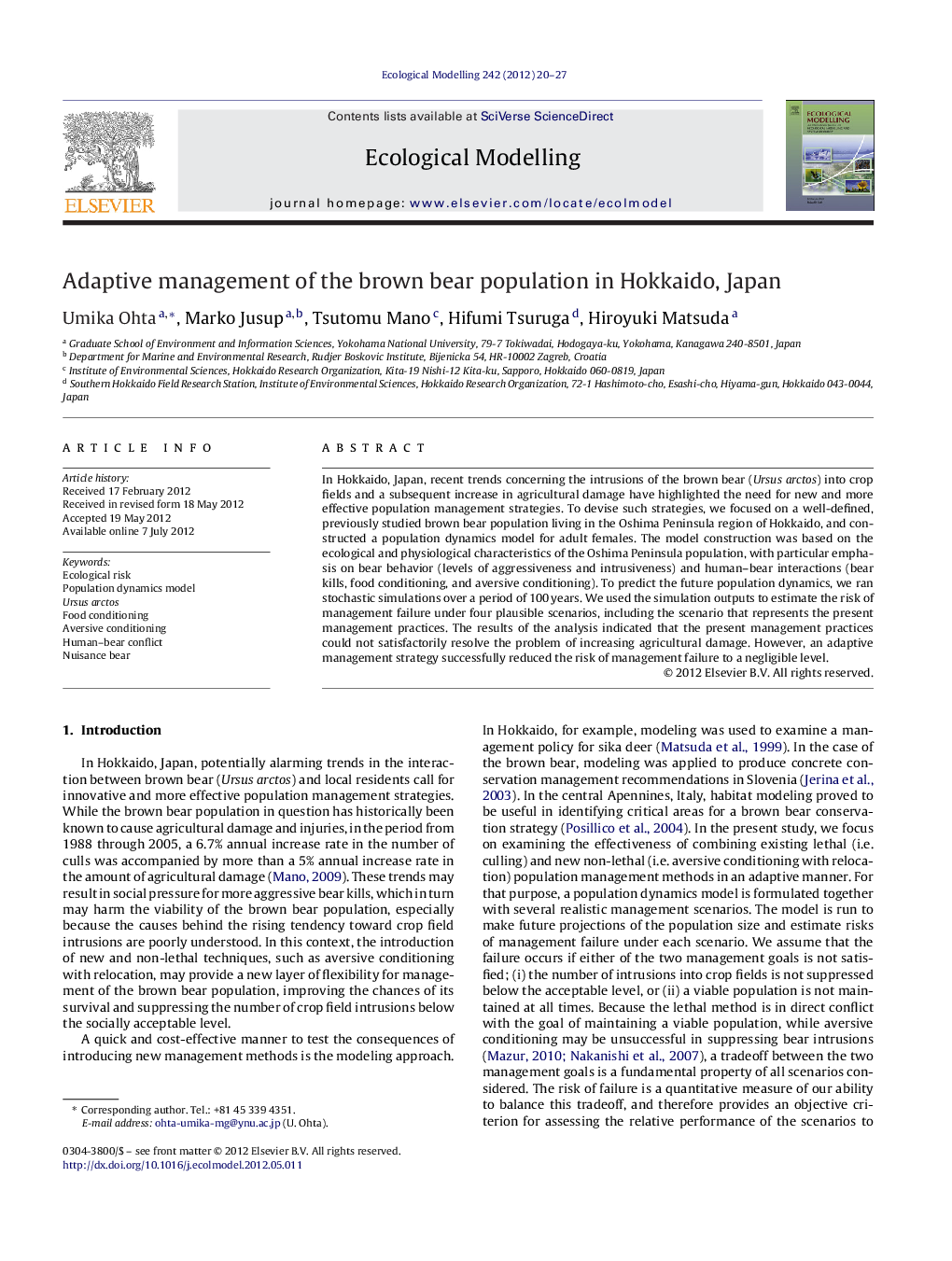| Article ID | Journal | Published Year | Pages | File Type |
|---|---|---|---|---|
| 4376370 | Ecological Modelling | 2012 | 8 Pages |
In Hokkaido, Japan, recent trends concerning the intrusions of the brown bear (Ursus arctos) into crop fields and a subsequent increase in agricultural damage have highlighted the need for new and more effective population management strategies. To devise such strategies, we focused on a well-defined, previously studied brown bear population living in the Oshima Peninsula region of Hokkaido, and constructed a population dynamics model for adult females. The model construction was based on the ecological and physiological characteristics of the Oshima Peninsula population, with particular emphasis on bear behavior (levels of aggressiveness and intrusiveness) and human–bear interactions (bear kills, food conditioning, and aversive conditioning). To predict the future population dynamics, we ran stochastic simulations over a period of 100 years. We used the simulation outputs to estimate the risk of management failure under four plausible scenarios, including the scenario that represents the present management practices. The results of the analysis indicated that the present management practices could not satisfactorily resolve the problem of increasing agricultural damage. However, an adaptive management strategy successfully reduced the risk of management failure to a negligible level.
► We model how various management strategies affect a brown bear female population. ► We examine how bear behavior and human–bear interactions influence management. ► The present management is inadequate to diminish the risk of human–bear conflict. ► An adaptive strategy may control the risk of management failure.
